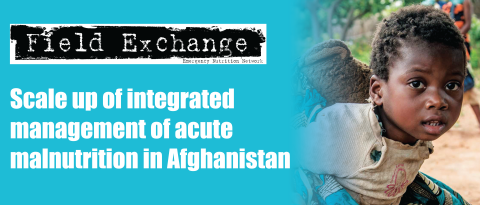Shock-responsive social protection systems research
Shock-responsive social protection systems research
Summary of research1
Location: Global
What we know: Cash is increasingly used in humanitarian response; there is limited evidence on the potential for government social protection schemes to respond to ‘shocks’.
What this article adds: Research was carried out including six country case studies, a literature review and global consultations to explore the potential role for long-term social protection systems in response to large-scale shocks. The study found different options for shock-responsive adaptation (tweaking design/piggybacking existing programmes; expanding existing programmes (topping up support to beneficiaries or adding beneficiaries); or aligning with humanitarian systems. Context-specific considerations during programme design include the level of political will; regulations; government capacity; financing and conflict. Operational considerations include carrying out effective needs assessments; deciding on appropriate transfer values and distribution modes; and good communication with beneficiaries and non-beneficiaries. Collaboration between social protection, disaster risk management and humanitarian actors is important at all levels; there are examples in the case studies of different coordination bodies, but much more coordination is needed. The authors make 12 recommendations to policy-makers and programmers.
The Shock-Responsive Social Protection Systems study is a UK Department for International Development (DFID)- funded research programme (2015 to 2018) led by Oxford Policy Management (OPM), in a consortium with Overseas Development Institute (ODI), Cash Learning Partnership (CaLP) and INASP. Its aim is to strengthen the evidence base on when and how social protection systems can better respond to shocks in low-income countries and fragile and conflict-affected states (FCAS) in order to minimise negative shock impacts and reduce the need for separate humanitarian responses. The study aimed to explore the potential role for long-term social protection systems in the response to large-scale shocks, either before or after the crisis occurs, and opportunities for coordination/integration of humanitarian interventions, disaster risk management (DRM) and social protection. Six case studies were undertaken (Pakistan, Philippines, Mozambique, Lesotho, Mali and the Sahel region), as well as a literature review and a series of consultations globally. The research focused on social assistance, including cash and in-kind transfers, school feeding programmes, public works programmes and food subsidy. This synthesis report consolidates the evidence and lessons learned.

Shock-responsive adaptation may occur through design tweaks to an existing programme, by piggybacking on another programme, vertical expansion (topping up support to beneficiaries), horizontal expansion (temporarily extending support to new households) or by alignment of social protection with humanitarian systems. Key principles for preparing an effective shock response are described in Box 1.
Box 1: Key principles for shock-responsive social protection
1. Strengthening routine social protection is worthwhile in its own right for building resilience.
2. Vulnerability and needs assessments are needed to decide if social protection is a suitable vehicle for addressing a shock.
3. Interventions are likely to work better if planned in advance, through early decision-making, active planning and early delivery of support.
4. Mature social protection contexts have more options in a crisis.
5. Shock-responsive social protection will never meet the needs of all households who need assistance, so coordination with other interventions is essential.
6. Measuring success requires the identification of appropriate indicators that can be compared across humanitarian and social protection responses and that cover outcomes and impacts, not just inputs and outputs.
Contextual factors that influence the design of shock-responsive programmes
The policy-making context will affect programme design, including the level of political will/openness to preparedness activities at government level. Opinions vary between countries on whether social protection programmes should be embedded into law (some felt that a legal basis assured programme longevity; others felt it introduced rigidity and limited flexibility). Government capacity is also important; all countries studied had some (although this was often stretched even without a shock) and some countries had little prospect of surge capacity in crisis. In these contexts, non-government actors are likely to be a key part of the human-resource capability in shock response for the long term. In order to embed a ‘shock-responsive’ element into a long-term, government-led social protection programme or system, it is necessary to understand many aspects of its financing. Governments studied could identify resources for shock response in many sectors (such as agriculture or health); however, in some cases robust processes were lacking for anticipating the size of funding requirements. A separate challenge is how to mobilise resources so that contingency funds are not discovered to be lacking when they are needed. It is likely that a combination of funding sources, topped up by humanitarian appeals where required, will be appropriate. Options available to governments may include contingency funds, disaster insurance and contingent credit lines, although all options have limitations as well as benefits. Conflict was identified as an important factor that can increase the need for shock-responsive social protection, but also undermine the capacity for response.
Operational factors in the implementation of shock-responsive social protection
A key operational factor to consider is the assessment of need for shock-responsive social protection. There is likely to be overlap between beneficiaries targeted for social protection and those targeted by humanitarian and DRM actors and therefore overlap in the most appropriate form of needs assessment. Another important consideration (preferably during preparedness planning) is the appropriate value of transfers. This will depend on what needs to be covered (basic survival or rebuilding livelihoods); trade-offs between scale, sufficiency and political support; and support provided by other agencies. Appropriate modes of transfer must be identified (manual versus digital distribution), depending on context and disruptions caused by the shock. Experiences in Pakistan, Lesotho and the Philippines highlight the need to communicate with beneficiaries and non-beneficiaries to ensure that social protection programmes are well understood by communities, including who is targeted and why.
How humanitarian, DRM and social protection systems can best work together
Collaboration among social protection, DRM and humanitarian actors may be strengthened by promoting common understanding of the different fields and their complementarity and by improving policy engagement and coordination of programmes and delivery systems. This should happen at all levels (not just national). In many countries, collaboration is currently limited. Examples were found of coordination groups that combined government, donor and non-governmental agencies, including forums for data collection and analysis (such as the Cadre Harmonisé in the Sahel); technical working groups on specific themes (e.g. cash working groups); groups that manage disaster response (e.g. the District Disaster Management Teams in Lesotho, humanitarian clusters, or the UN Humanitarian Country Teams); alliances for advocacy and policy coordination; temporary committees; and periodic conferences.
The authors present 12 recommendations, described in Box 2.
Box 2: Recommendations for shock-responsive social protection
For policy-makers:
1. Don’t overlook the value of strengthening routine social protection in reducing the negative consequences of shocks.
2. Consider how to increase the ability of social protection programmes and delivery systems to withstand the shock themselves and to continue to function in a crisis.
3. In relation to particular shocks or types of shock, analyse systematically whether and how social protection can best contribute to a response.
4. Increase ex-ante (forecast-based) planning and action.
5. Develop guidance on shock response through social protection (e.g. roles and responsibilities, protocols for accessing data, etc.).
6. Build strategic collaboration across sectors: it does not happen organically.
7. Pay close attention to adverse impacts.
For programme implementers:
8. Take into account that many social protection programmes can become more shock-responsive with simple design tweaks.
9. Ensure that finances are available to facilitate the adaptation of programmes and systems. Robust processes need to be in place for anticipating and releasing funds.
10. Consider capacity constraints to avoid a negative impact on the underlying social protection programme or system (e.g. by overburdening staff).
11. Promote coordination between individual interventions within the wider emergency response where appropriate.
12. More monitoring and evaluation information on the efficiency and effectiveness of shock-responsive social protection is required to understand whether they provide a better alternative than other responses.
Endnotes
1O'Brien C, Scott Z, Smith G, Barca V, Kardan A, Holmes R, Watson C and Congrave J. (2018), Shock-Responsive Social Protection Systems Research: Synthesis Report. Oxford Policy Management, Oxford, UK.


